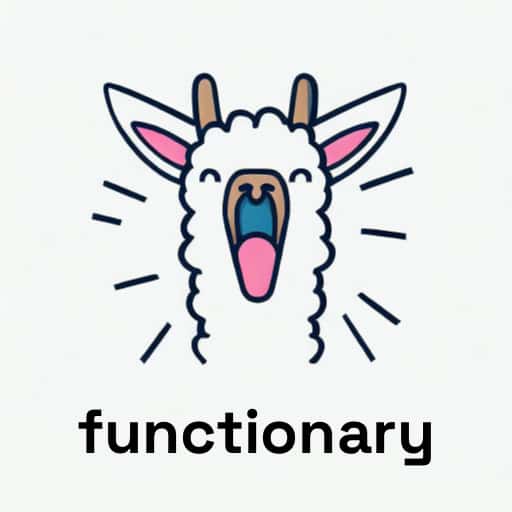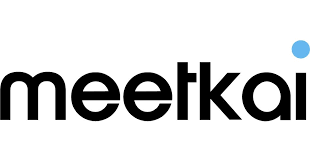functionary-small-v3.1 GGUF Models
Choosing the Right Model Format
Selecting the correct model format depends on your hardware capabilities and memory constraints.
BF16 (Brain Float 16) – Use if BF16 acceleration is available
- A 16-bit floating-point format designed for faster computation while retaining good precision.
- Provides similar dynamic range as FP32 but with lower memory usage.
- Recommended if your hardware supports BF16 acceleration (check your device’s specs).
- Ideal for high-performance inference with reduced memory footprint compared to FP32.
📌 Use BF16 if:
✔ Your hardware has native BF16 support (e.g., newer GPUs, TPUs).
✔ You want higher precision while saving memory.
✔ You plan to requantize the model into another format.
📌 Avoid BF16 if:
❌ Your hardware does not support BF16 (it may fall back to FP32 and run slower).
❌ You need compatibility with older devices that lack BF16 optimization.
F16 (Float 16) – More widely supported than BF16
- A 16-bit floating-point high precision but with less of range of values than BF16.
- Works on most devices with FP16 acceleration support (including many GPUs and some CPUs).
- Slightly lower numerical precision than BF16 but generally sufficient for inference.
📌 Use F16 if:
✔ Your hardware supports FP16 but not BF16.
✔ You need a balance between speed, memory usage, and accuracy.
✔ You are running on a GPU or another device optimized for FP16 computations.
📌 Avoid F16 if:
❌ Your device lacks native FP16 support (it may run slower than expected).
❌ You have memory limitations.
Quantized Models (Q4_K, Q6_K, Q8, etc.) – For CPU & Low-VRAM Inference
Quantization reduces model size and memory usage while maintaining as much accuracy as possible.
- Lower-bit models (Q4_K) → Best for minimal memory usage, may have lower precision.
- Higher-bit models (Q6_K, Q8_0) → Better accuracy, requires more memory.
📌 Use Quantized Models if:
✔ You are running inference on a CPU and need an optimized model.
✔ Your device has low VRAM and cannot load full-precision models.
✔ You want to reduce memory footprint while keeping reasonable accuracy.
📌 Avoid Quantized Models if:
❌ You need maximum accuracy (full-precision models are better for this).
❌ Your hardware has enough VRAM for higher-precision formats (BF16/F16).
Very Low-Bit Quantization (IQ3_XS, IQ3_S, IQ3_M, Q4_K, Q4_0)
These models are optimized for extreme memory efficiency, making them ideal for low-power devices or large-scale deployments where memory is a critical constraint.
IQ3_XS: Ultra-low-bit quantization (3-bit) with extreme memory efficiency.
- Use case: Best for ultra-low-memory devices where even Q4_K is too large.
- Trade-off: Lower accuracy compared to higher-bit quantizations.
IQ3_S: Small block size for maximum memory efficiency.
- Use case: Best for low-memory devices where IQ3_XS is too aggressive.
IQ3_M: Medium block size for better accuracy than IQ3_S.
- Use case: Suitable for low-memory devices where IQ3_S is too limiting.
Q4_K: 4-bit quantization with block-wise optimization for better accuracy.
- Use case: Best for low-memory devices where Q6_K is too large.
Q4_0: Pure 4-bit quantization, optimized for ARM devices.
- Use case: Best for ARM-based devices or low-memory environments.
Summary Table: Model Format Selection
| Model Format | Precision | Memory Usage | Device Requirements | Best Use Case |
|---|---|---|---|---|
| BF16 | Highest | High | BF16-supported GPU/CPUs | High-speed inference with reduced memory |
| F16 | High | High | FP16-supported devices | GPU inference when BF16 isn’t available |
| Q4_K | Medium Low | Low | CPU or Low-VRAM devices | Best for memory-constrained environments |
| Q6_K | Medium | Moderate | CPU with more memory | Better accuracy while still being quantized |
| Q8_0 | High | Moderate | CPU or GPU with enough VRAM | Best accuracy among quantized models |
| IQ3_XS | Very Low | Very Low | Ultra-low-memory devices | Extreme memory efficiency and low accuracy |
| Q4_0 | Low | Low | ARM or low-memory devices | llama.cpp can optimize for ARM devices |
Included Files & Details
functionary-small-v3.1-bf16.gguf
- Model weights preserved in BF16.
- Use this if you want to requantize the model into a different format.
- Best if your device supports BF16 acceleration.
functionary-small-v3.1-f16.gguf
- Model weights stored in F16.
- Use if your device supports FP16, especially if BF16 is not available.
functionary-small-v3.1-bf16-q8_0.gguf
- Output & embeddings remain in BF16.
- All other layers quantized to Q8_0.
- Use if your device supports BF16 and you want a quantized version.
functionary-small-v3.1-f16-q8_0.gguf
- Output & embeddings remain in F16.
- All other layers quantized to Q8_0.
functionary-small-v3.1-q4_k.gguf
- Output & embeddings quantized to Q8_0.
- All other layers quantized to Q4_K.
- Good for CPU inference with limited memory.
functionary-small-v3.1-q4_k_s.gguf
- Smallest Q4_K variant, using less memory at the cost of accuracy.
- Best for very low-memory setups.
functionary-small-v3.1-q6_k.gguf
- Output & embeddings quantized to Q8_0.
- All other layers quantized to Q6_K .
functionary-small-v3.1-q8_0.gguf
- Fully Q8 quantized model for better accuracy.
- Requires more memory but offers higher precision.
functionary-small-v3.1-iq3_xs.gguf
- IQ3_XS quantization, optimized for extreme memory efficiency.
- Best for ultra-low-memory devices.
functionary-small-v3.1-iq3_m.gguf
- IQ3_M quantization, offering a medium block size for better accuracy.
- Suitable for low-memory devices.
functionary-small-v3.1-q4_0.gguf
- Pure Q4_0 quantization, optimized for ARM devices.
- Best for low-memory environments.
- Prefer IQ4_NL for better accuracy.
🚀 If you find these models useful
Please click like ❤ . Also I’d really appreciate it if you could test my Network Monitor Assistant at 👉 Network Monitor Assitant.
💬 Click the chat icon (bottom right of the main and dashboard pages) . Choose a LLM; toggle between the LLM Types TurboLLM -> FreeLLM -> TestLLM.
What I'm Testing
I'm experimenting with function calling against my network monitoring service. Using small open source models. I am into the question "How small can it go and still function".
🟡 TestLLM – Runs the current testing model using llama.cpp on 6 threads of a Cpu VM (Should take about 15s to load. Inference speed is quite slow and it only processes one user prompt at a time—still working on scaling!). If you're curious, I'd be happy to share how it works! .
The other Available AI Assistants
🟢 TurboLLM – Uses gpt-4o-mini Fast! . Note: tokens are limited since OpenAI models are pricey, but you can Login or Download the Free Network Monitor agent to get more tokens, Alternatively use the TestLLM .
🔵 HugLLM – Runs open-source Hugging Face models Fast, Runs small models (≈8B) hence lower quality, Get 2x more tokens (subject to Hugging Face API availability)
Model Card for functionary-small-v3.1
This model was based on meta-llama/Meta-Llama-3.1-8B-Instruct, using Meta's original prompt template as described in: User-defined Custom tool calling
https://github.com/MeetKai/functionary

Functionary is a language model that can interpret and execute functions/plugins.
The model determines when to execute functions, whether in parallel or serially, and can understand their outputs. It only triggers functions as needed. Function definitions are given as JSON Schema Objects, similar to OpenAI GPT function calls.
Key Features
- Intelligent parallel tool use
- Able to analyze functions/tools outputs and provide relevant responses grounded in the outputs
- Able to decide when to not use tools/call functions and provide normal chat response
- Truly one of the best open-source alternative to GPT-4
- Support code interpreter
How to Get Started
We provide custom code for parsing raw model responses into a JSON object containing role, content and tool_calls fields. This enables the users to read the function-calling output of the model easily.
from transformers import AutoModelForCausalLM, AutoTokenizer
tokenizer = AutoTokenizer.from_pretrained("meetkai/functionary-small-v3.1")
model = AutoModelForCausalLM.from_pretrained("meetkai/functionary-small-v3.1", device_map="auto", trust_remote_code=True)
tools = [
{
"type": "function",
"function": {
"name": "get_current_weather",
"description": "Get the current weather",
"parameters": {
"type": "object",
"properties": {
"location": {
"type": "string",
"description": "The city and state, e.g. San Francisco, CA"
}
},
"required": ["location"]
}
}
}
]
messages = [{"role": "user", "content": "What is the weather in Istanbul and Singapore respectively?"}]
final_prompt = tokenizer.apply_chat_template(messages, tools, add_generation_prompt=True, tokenize=False)
inputs = tokenizer(final_prompt, return_tensors="pt").to("cuda")
pred = model.generate_tool_use(**inputs, max_new_tokens=128, tokenizer=tokenizer)
print(tokenizer.decode(pred.cpu()[0]))
Prompt Template
We convert function definitions to a similar text to TypeScript definitions. Then we inject these definitions as system prompts. After that, we inject the default system prompt. Then we start the conversation messages.
This formatting is also available via our vLLM server which we process the functions into Typescript definitions encapsulated in a system message using a pre-defined Transformers Jinja chat template. This means that the lists of messages can be formatted for you with the apply_chat_template() method within our server:
from openai import OpenAI
client = OpenAI(base_url="http://localhost:8000/v1", api_key="functionary")
client.chat.completions.create(
model="path/to/functionary/model/",
messages=[{"role": "user",
"content": "What is the weather for Istanbul?"}
],
tools=[{
"type": "function",
"function": {
"name": "get_current_weather",
"description": "Get the current weather",
"parameters": {
"type": "object",
"properties": {
"location": {
"type": "string",
"description": "The city and state, e.g. San Francisco, CA"
}
},
"required": ["location"]
}
}
}],
tool_choice="auto"
)
will yield:
<|start_header_id|>system<|end_header_id|>
Environment: ipython
Cutting Knowledge Date: December 2023
You have access to the following functions:
Use the function 'get_current_weather' to 'Get the current weather'
{"name": "get_current_weather", "description": "Get the current weather", "parameters": {"type": "object", "properties": {"location": {"type": "string", "description": "The city and state, e.g. San Francisco, CA"}},"required": ["location"]}}
Think very carefully before calling functions.
If a you choose to call a function ONLY reply in the following format:
<{start_tag}={function_name}>{parameters}{end_tag}
where
start_tag => `<function`
parameters => a JSON dict with the function argument name as key and function argument value as value.
end_tag => `</function>`
Here is an example,
<function=example_function_name>{"example_name": "example_value"}</function>
Reminder:
- If looking for real time information use relevant functions before falling back to brave_search
- Function calls MUST follow the specified format, start with <function= and end with </function>
- Required parameters MUST be specified
- Only call one function at a time
- Put the entire function call reply on one line
<|eot_id|><|start_header_id|>user<|end_header_id|>
What is the weather for Istanbul?
A more detailed example is provided here.
Run the model
We encourage users to run our models using our OpenAI-compatible vLLM server here.
The MeetKai Team
- Downloads last month
- 1,123
